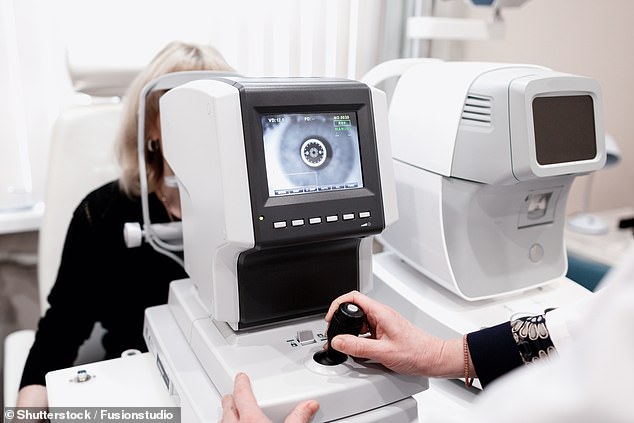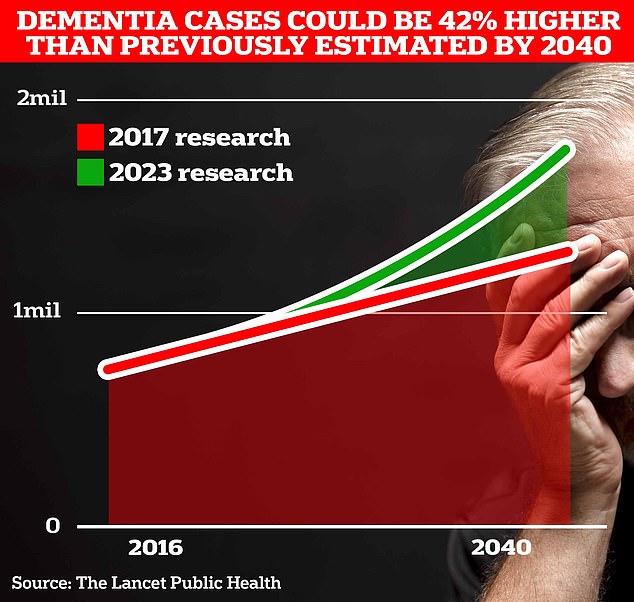Going to the opticians for an eye test could spot if you are at risk of Alzheimer’s years before symptoms first appear, promising research has suggested.
US scientists found those who had suffered changes to tiny blood vessels in their retinas were more likely to have a common genetic mutation, known to raise the risk of the memory-robbing condition.
They also discovered blood vessels that are more twisted and looped than normal may limit how nutrients and oxygen is transported.
Experts, who labelled the findings ‘very informative’, hope that tracking tiny changes in the retina that occur over time, could now help spot dementia patients sooner and treat them earlier.
Alzheimer’s is the leading cause of dementia, and while not yet curable, early diagnosis is considered critical for better outcomes as treatments can combat symptoms and slow down progression.
Dr Alaina Reagan, a neuroscientist at The Jackson Laboratory, a US-based biomedical research institution and study lead researcher, said: ‘If you’re at an optometrist or ophthalmologist appointment, and they can see odd vascular changes in your retina, that could potentially represent something that is also happening in your brain.
‘This could be very informative for early diagnostics.’
She added: ‘We can see these wavy vessels in the retinas, which can occur in people with dementia.

A routine eye check could soon detected Alzheimer’s disease up to twenty years before symptoms appear
‘That speaks to a more systemic problem, not just a brain- or retina-specific problem. It could be a blood pressure problem affecting everything.’
In the study, published in the journal Alzheimer’s & Dementia, researchers looked at mice carrying a gene mutation MTHFR677C>T, which is thought to affect around 40 per cent of the population.
Retinas in the mice were found to have twisted vessels, narrowed and swollen arteries, and less vessel branching as early as six months of age.
This reflected changes in the brain linked to poor blood flow and an increased risk of cognitive decline, the researchers said.
‘A lot of these molecular changes are happening in conjunction, which suggests these systems in brain and retinal tissue are working in tandem,’ Dr Raegan said.
Previous smaller studies have also suggested eye scans could be used to track cognitive decline, which can be a precursor to dementia, trials have been small.
But the researchers said, further research was first necessary to prove their was a link between twisted blood vessels in the retina and Alzheimer’s.
Recent analysis by the Alzheimer’s society estimated the overall annual cost of dementia to the UK is £42billion a year, with families bearing the brunt.

Over 980,000 people in the UK are currently thought to be living with the memory-robbing disorder. But Alzheimer’s Society predict this number to rise to 1.4million by 2040 due to an ageing population
An ageing population means these costs—which include lost earnings if unpaid carers—are set to soar to £90billion in the next 15 years.
Around 982,000 people in the UK are thought to be living with dementia, but more than a third of people with the debilitating condition do not have a diagnosis.
memory problems, difficulties with thinking and reasoning and language problems are common early symptoms of the condition, which then worsen over time.
A separate Alzheimer’s Research UK analysis found 74,261 people died from dementia in 2022, making it the country’s biggest killer.












